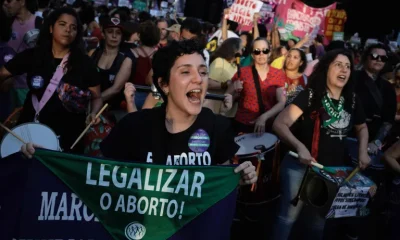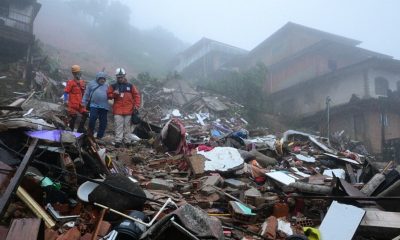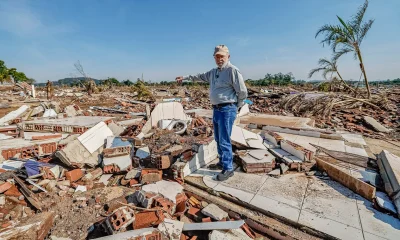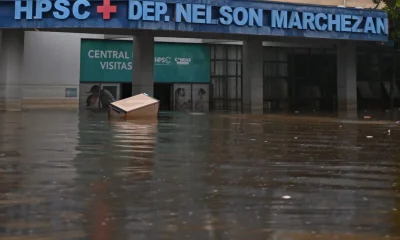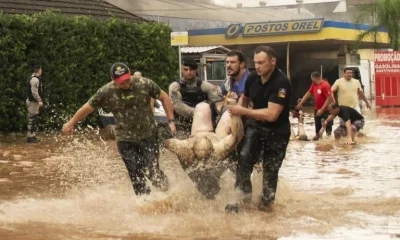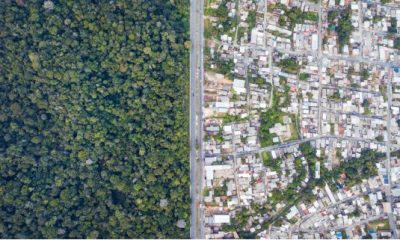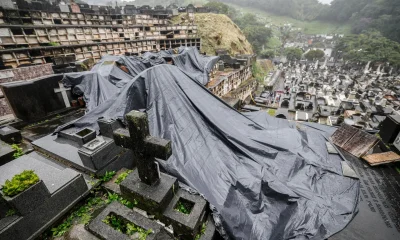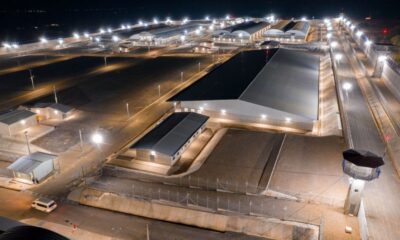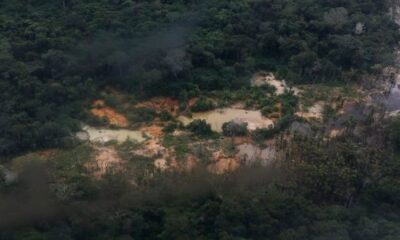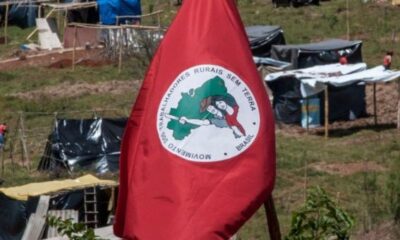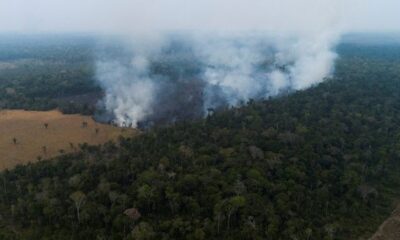International
Death toll from floods in southern Brazil rise to 148
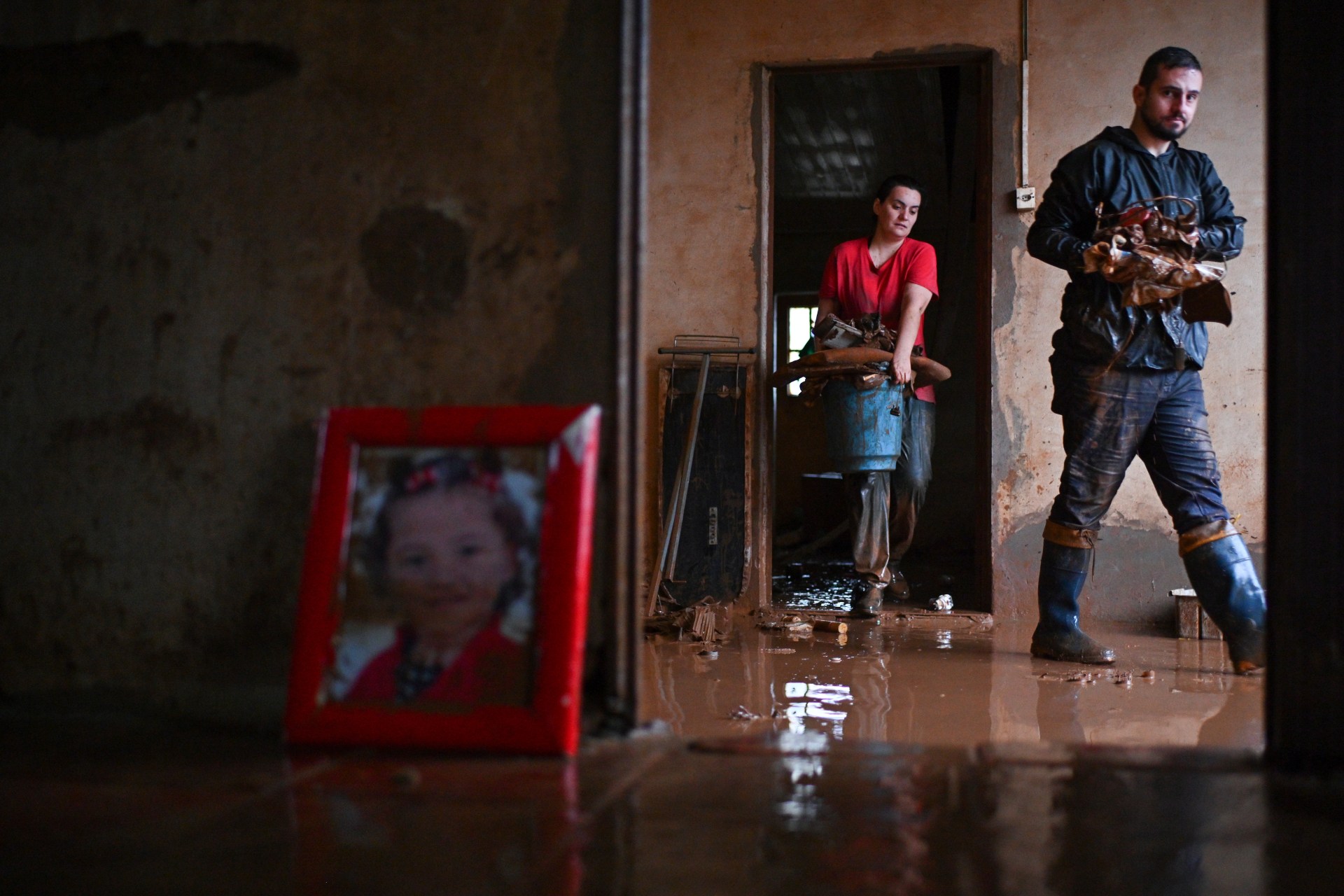
The number of deaths from the serious floods that have been punishing southern Brazil for two weeks has reached 148 and the number of missing persons has reached 127, according to the latest Civil Defense bulletin.
According to the organization, the greatest climate tragedy in the history of the southern region of Brazil has also left 806 injured.
The most dramatic situation is in Rio Grande do Sul, a state bordering Argentina and Uruguay and where at least 147 deaths have been reported. The other victim has been registered in the neighboring state of Santa Catarina.
According to the Civil Defense, the tragedy has spread to 447 of the 497 municipalities of Río Grande do Sul. Affecting 2.12 million people, which corresponds to 18.8% of the 11.3 million inhabitants of this prosperous state.
Of those affected, 80,826 have had to be accommodated in improvised accommodation in schools, gyms and churches. Another 538,241, in homes of family and friends.
The Civil Defense has also reported that the rescue work, in which 27,651 firefighters, military and police participate with the support of 4,405 patrols, 41 aircraft and 340 boats, have so far allowed the rescue of 76,470 people and 10,814 animals.
The devastating floods have destroyed part of some populations. They have left numerous municipalities totally flooded and partially others, such as Porto Alegre, the regional capital, and a huge trail of devastation.
The already serious situation may get worse in the coming days, by the time new storms with precipitation, cold and strong gusts of wind are expected.
The rains have fallen again with intensity since Sunday, so the level of the waters of the rivers, which had begun to decrease on Friday, has risen again but without reaching the highs they recorded.
With the rains on Saturday and Sunday, the Guaíba River, which flooded much of the historic center of Porto Alegre, including its airport and the land transport terminal, has risen again and is now at 4.78 meters.
Projections from the Federal University of Rio Grande do Sul (UFRGS) indicate that the water level in the Guaíba can reach the historical mark of 5.5 meters in the coming days if the rain persists.
In the same way, the Taquari and Caí rivers have overflowed again and have caused new floods in the municipalities of the interior of Rio Grande do Sul.
The new flood has dragged in the early hours of Monday the bridge that connected the cities of Caxias do Sul and Nova Petrópolis. The new floods have led the authorities to declare the maximum alert for the possibility of intense flooding in the Vales region.
Likewise, the maximum alert is maintained in the municipalities located on the banks of the so-called Lagoa dos Patos, where all the waters of the Guaíba flow and whose level has been rising since last Thursday causing flooding in important cities such as Pelotas and Rio Grande.
One of the main concerns is the economic impact that the tragedy will have. Río Grande do Sul is an important agricultural center in the country and the largest rice producer in Brazil.
According to the regional authorities, the initial needs to address the emergency are estimated at 18,839 million reais (3,663 million dollars or 3,392 million euros).
The Brazilian city of Porto Alegre spent ten days flooded and it is very likely that its situation will be aggravated by a new flood of the Guaíba River, which could reach a new record level on Tuesday, according to local authorities.
The heavy rains of the last few days in southern Brazil have again caused the rise of the river, which this Monday reached 4.94 meters, a level that exceeds 4.76 meters that, until last week, was the highest level of which there were records and that had only been reached once, in 1941.
The governor of Río Grande do Sul, Eduardo Leite, warned that the river will be able to exceed the level of 5.5 meters on Tuesday, which is 20 centimeters more than the level reached last week, at the worst moment of the flood that affects the capital of the state of Rio Grande do Sul.
At a press conference, Leite said that “it is still not time to return home” and asked that people who returned to their homes in risk areas be safely returned to shelters.
The Brazilian Government announced on Monday a suspension of the payments of the debt of the state of Rio Grande do Sul with the Treasury for three years, to help the reconstruction of that region devastated by the floods.
The debt of that state reaches 104 billion reais (20,390 million dollars or 18.9 billion euros) and, with the moratorium, about 10% of that amount will be released for the reconstruction of the state, said the Minister of Finance, Fernando Haddad, along with the president, Luiz Inácio Lula da Silva, and Parliament authorities, who will have to approve that measure.
The minister added that, during that period, interest on the debt will not be counted either, all with the purpose of “recovering the economic capacity of Rio Grande do Sul in the shortest possible period,” he said.
The governor of Rio Grande do Sul, Eduardo Leite, who attended the announcement by videoconference, thanked the support and recognized “the effort of the entire federal government” in the face of the emergency.
With less intensity, the rain also affects the borders of Argentina and Uruguay, where thousands of people have been evacuated.
Before the current climate disaster, Rio Grande do Sul already had serious problems honoring its debt to the Treasury, which is equivalent to 185% of that state’s annual income, according to data from the regional government.
The economic consequences of the disaster are still immeasurable, but a balance sheet of the Federation of Industries of Rio Grande do Sul has already drawn a partial panorama.
According to that organization, 86.4% of the state’s industrial plants are located in the affected cities, which have had their activities practically paralyzed for two weeks, like almost the entire regional agricultural sector.
Also about 600,000 small and medium-sized companies have plummeted, due to the difficulties for delivery in regions where bridges and roads have collapsed and the airports operate halfway or are completely closed, as is the case with the one in Porto Alegre.
Last week, the federal government had already announced an aid plan for Rio Grande do Sul for about 50 billion reais (9.8 billion dollars or 9.09 billion euros), which includes direct assistance and subsidized credits for small businesses, among many other measures.
International
Police investigate deaths of Rob Reiner and wife as apparent homicide

The Los Angeles Police Department (LAPD) is investigating the deaths of Hollywood actor and filmmaker Rob Reinerand his wife as an “apparent homicide,” amid a wave of tributes to the director of classics such as When Harry Met Sally.
According to U.S. media reports on Sunday, Rob Reiner and Michele Singer Reiner were found dead at their Los Angeles mansion with what appeared to be stab wounds.
Several political figures shared messages of condolence following the reported deaths of the director of A Few Good Menand his wife.
While the LAPD did not officially confirm the identities of the victims, it stated that homicide detectives were dispatched to the Reiner residence.
“At this time, no additional details are available and the investigation into an apparent homicide is ongoing,” the Los Angeles Police Department said in a statement posted on social media.
LAPD Deputy Chief Alan Hamilton told reporters that no arrests have been made and that no individuals are currently being questioned as suspects.
“I’m not going to confirm whether anyone is being questioned at this moment or not. We are going to try to speak with as many family members as we can,” Hamilton said.
CNN reported that a family spokesperson confirmed the deaths of Reiner and his wife.
California Governor Gavin Newsom, former U.S. President Barack Obama, and former Vice President Kamala Harrisissued statements expressing their condolences.
International
U.S. and Mexico Reach Deal to Address Water Deficit Under 1944 Treaty

The United States and Mexico have reached an agreement to comply with current water obligations affecting U.S. farmers and ranchers and for Mexico to cover its water deficit to Texas under the 1944 Water Treaty, the U.S. Department of Agriculture said in a statement.
The department уточified that the agreement applies to both the current cycle and the water deficit from the previous cycle.
On Monday, U.S. President Donald Trump accused Mexico of failing to comply with the water-sharing treaty between the two countries, which requires the United States to deliver 1.85 billion cubic meters of water from the Colorado River, while Mexico must supply 432 million cubic meters from the Rio Grande.
Mexico is behind on its commitments. According to Washington, the country has accumulated a deficit of more than one billion cubic meters of water over the past five years.
“This violation is severely harming our beautiful crops and our livestock in Texas,” Trump wrote on Monday.
The Department of Agriculture said on Friday that Mexico had agreed to supply 250 million cubic meters of water starting next week and to work toward closing the shortfall.
Agriculture Secretary Brooke Rollins, quoted in the statement, said Mexico delivered more water in a single year than it had over the previous four years combined.
Trump has said that if Mexico continues to fall short of its obligations, the United States reserves the right to impose 5% tariffs on imported Mexican products.
Mexico’s Deputy Foreign Minister for North America, Roberto Velasco, said that a severe drought in 2022 and 2023prevented the country from meeting its commitments.
International
Several people shot in attack on Brown University campus

Several people were shot on Saturday in an attack on the campus of Brown University, in the northeastern United States, local police reported.
“Shelter in place and avoid the area until further notice,” the Providence Police Department urged in a post on X. Brown University is located in Providence, the capital of the state of Rhode Island.
U.S. President Donald Trump said on his social media platform Truth Social that he had been briefed on the situation and that the FBI was on the scene.
At 5:52 p.m. local time (11:52 p.m. GMT), Brown University said the situation was still “ongoing” and instructed students to remain sheltered until further notice.
After initially stating that the suspect had been taken into custody, Trump later posted a second message clarifying that local police had walked back that information. “The suspect has NOT been apprehended,” the U.S. president said.
-

 International5 days ago
International5 days agoWashington declares State of Emergency as atmospheric river brings severe flooding
-

 International5 days ago
International5 days agoU.S. to require five-year social media history from tourists under Visa Waiver Program
-

 Central America4 days ago
Central America4 days agoHonduras election crisis deepens as CNE president denounces intimidation attempts
-

 Central America5 days ago
Central America5 days agoOAS and EU urge honduran political actors to respect vote results and avoid unrest
-

 International4 days ago
International4 days agoCuba battles out-of-control dengue and chikungunya epidemic as death toll rises to 44
-

 International4 days ago
International4 days agoColombia says it would not reject Maduro asylum request as regional tensions escalate
-

 International2 days ago
International2 days agoSeveral people shot in attack on Brown University campus
-

 International11 hours ago
International11 hours agoPolice investigate deaths of Rob Reiner and wife as apparent homicide
-

 International4 days ago
International4 days agoEcuador on track for record violence as homicides hit highest level in Latin America again
-

 Central America24 hours ago
Central America24 hours agoPanama seizes over three tons of drugs hidden in Caribbean port container
-

 International5 days ago
International5 days agoSix ecuadorian soldiers jailed pending trial for alleged extrajudicial execution
-

 Central America11 hours ago
Central America11 hours agoOAS urges swift recount in Honduras as election results remain uncertain
-

 International2 days ago
International2 days agoU.S. and Mexico Reach Deal to Address Water Deficit Under 1944 Treaty





























